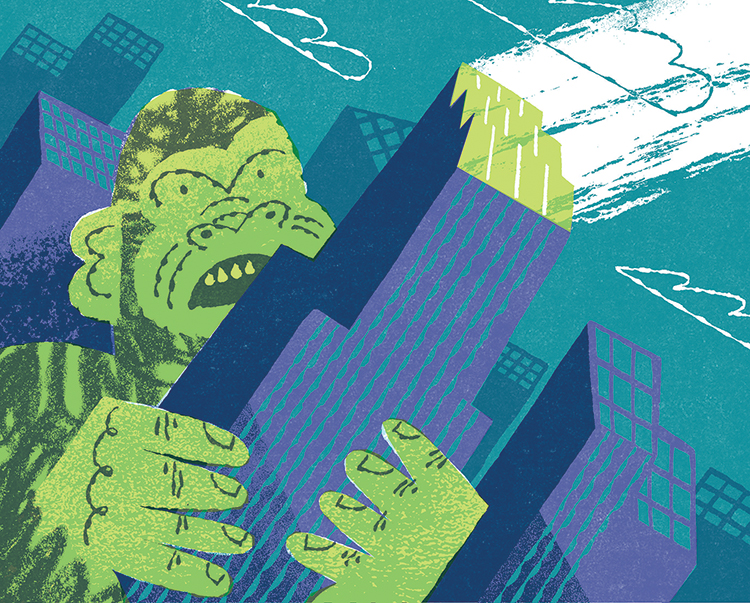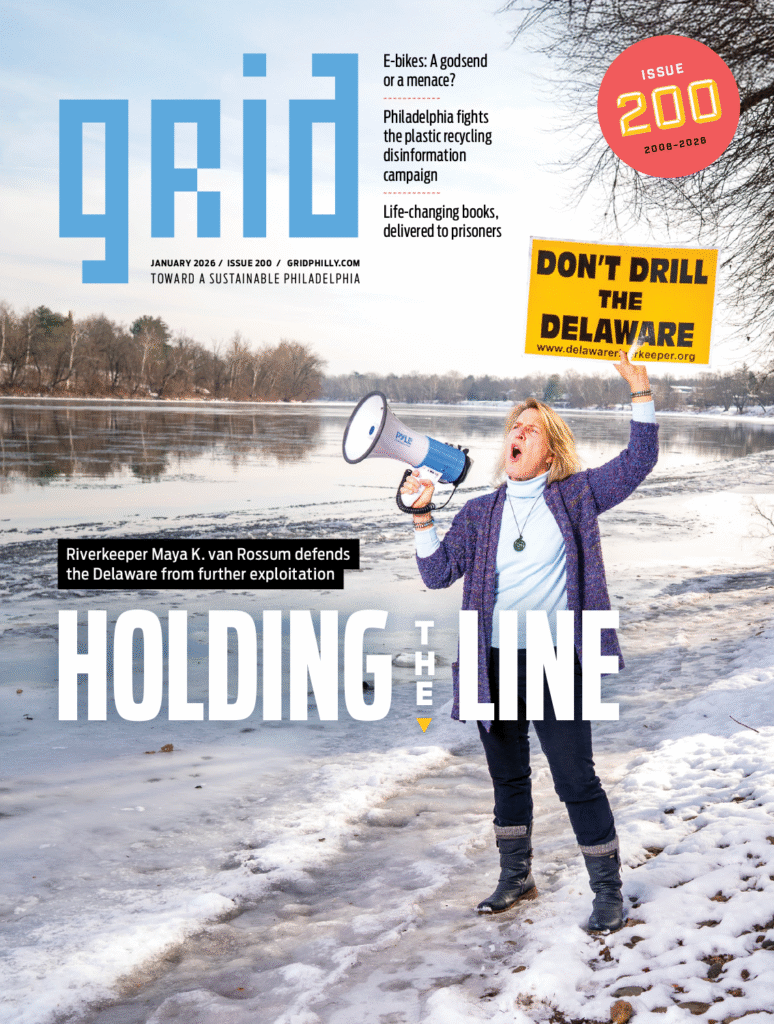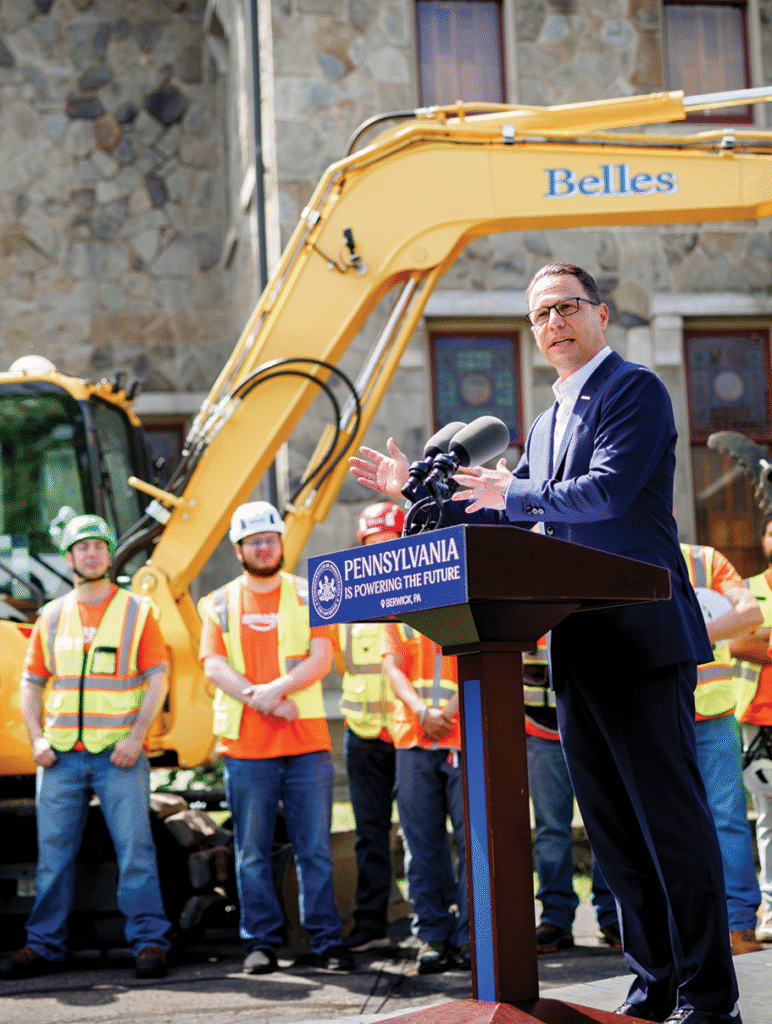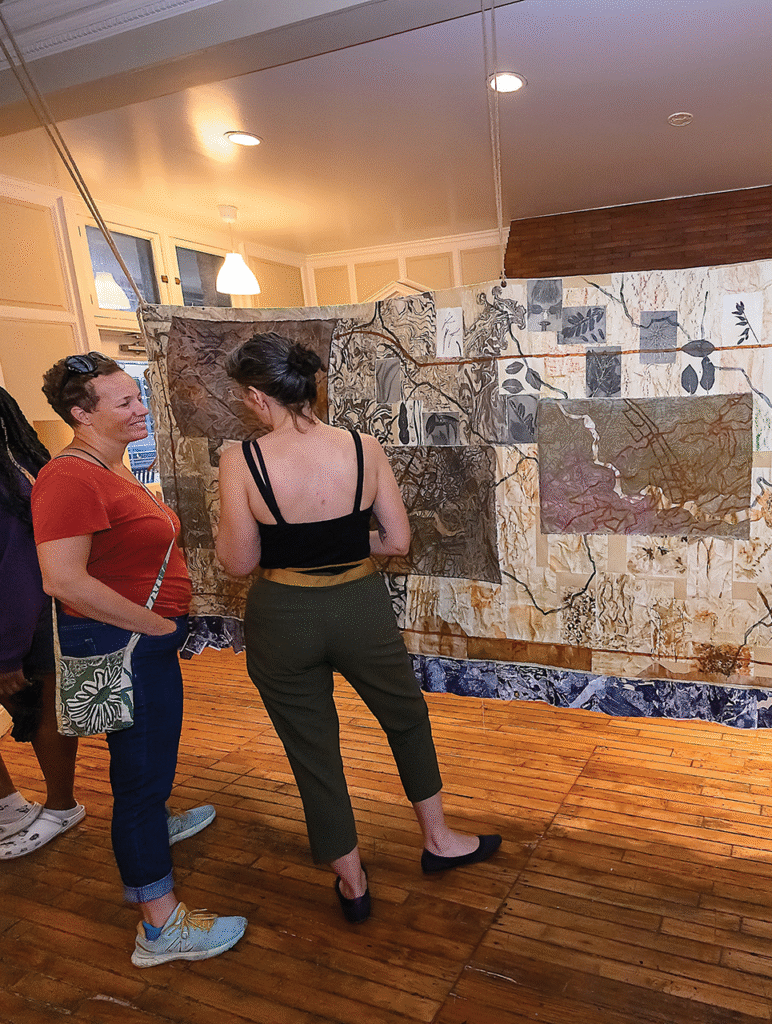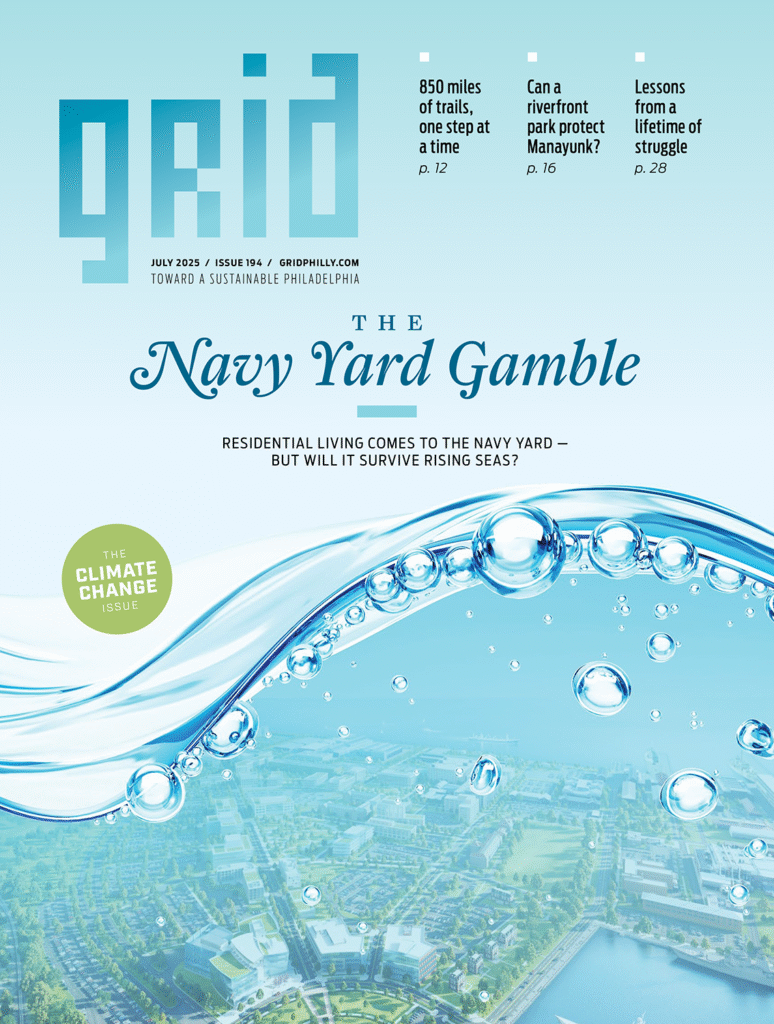The Coming Storm
by Justin Klugh
Nestled between 42nd and 43rd streets in Sea Isle, within earshot of the Atlantic, there was a house built in an odd place.
“We were in someone else’s backyard, basically,” explains Dan Gallagher, whose father owns the property. “We always said, ‘If there’s ever going to be anything bad, it’s gonna be the people in front of us who are gonna get hit first!’”
Constructed in 1910, the house survived in its unique location for almost nine decades before Gallagher’s parents came upon it in 1999. On the hunt for a reasonably priced bungalow to share big family summers, they saw immediate appeal.
With no driveway or street access, reaching the front door meant walking through the properties of the adjacent, more modernized, three- and four-story beach houses. Minus the addition put on by the previous owners, the whole place took up about 650 square feet. But like any piece of real estate, especially one on a barrier island like Sea Isle, the investment came with a risk.
“The particular part of the island where we lived was flood-prone,” Dan says forebodingly. “On every stop sign you can see the lateral posts that say, ‘Warning: Flood Zone,’ or ‘Flood Area.’ At high tide… that street would get some extra water.”
In October 2012, the Gallaghers watched a tropical depression twist into existence off the coast of Nicaragua. By Oct. 29, Hurricane Sandy had New Jersey in its crosshairs.
With a 115 mph maelstrom bearing down on their investment, Dan’s father made a call to an uncle who lived at the beach year-round to make the somewhat meager request that he secure the deck furniture.
Sandy pounded the eastern seaboard, flooding, crippling and wiping out structures and services that affected 50 million people. The U.S. death toll was reported at 109.
Dan’s uncle headed over to the hundred-year-old house between 42nd and 43rd streets with a tape measure. “He waited until the water had subsided, because that street stayed flooded for a very, very long time, even after the storm had passed,” Dan says.
His father received images of 2 feet of water sinking his house, which destroyed the flooring, outlets, appliances and furniture. After arriving on the scene in November, he found parts of the floor swallowed up by the ground and the structure stripped down to its bones.
The surrounding homes on stilts, however, suffered only minimal damage.
“It was pretty devastating.” The moment registered with Dan. “It was just… silence. How do you react to that? How do you respond to that?”
The neighbors’ house in front of them—“If there’s ever going to be anything bad, it’s gonna be the people in front of us who are gonna get hit first!”—appeared untouched by Sandy’s fury, the lesson painfully obvious: Severe destruction is not something to which you can easily respond. It’s something you have to prepare to avoid.
“There’s six grandkids in my family now, with no spot really to go,” Dan says. “That was probably the biggest hurdle, emotionally. My dad… this year, you could just see it. He says, ‘I worked my whole life for something like this, I never would have imagined it would be this difficult to get back up.’”
Four years later, the house is unbuilt, and fallout from the devastation of Sandy remains.
The Worst Case Scenario
Largely ignored by nature’s worst wraths, Philadelphia has some geographical advantages. But being 90 miles inland won’t be enough to stop the uptick in heat, flooding and severe, Sandy-like weather scientists predict for the decades ahead.
Philadelphia’s residents currently suffer through at times unpleasant, but rarely cataclysmic, weather. For Sarah Wu, deputy director for planning at Philadelphia’s Office of Sustainability in Center City, it’s part of her job to look at the data and imagine just these climate-change-related scenarios, all in an effort to avoid them.
“If we continue to emit carbon the way we’re emitting, or decide we’re going to maniacally emit even more carbon than we’re currently emitting,” she explains, “it makes it hotter, it makes it wetter and it makes the sea level rise. We’re planning for the worst case scenario.”
The Office of Sustainability commissioned four different companies to provide climate modeling for the city, three of which are the basis for the hotter, wetter scenario described by Wu. As for the overall carbon emissions, ICF International, a consulting firm that worked with the Office of Sustainability on an August 2014 report entitled “Useful Climate Information for Philadelphia: Past and Future,” reported that we’re on track for the kinds of global emissions that would affect us locally.
“Philadelphia is expected to face a warmer and wetter future across all scenarios for the near-term and mid-century time periods compared to historical observations,” the report states.
ICF ran four sets of numbers, factoring in climate models from 2007 and 2013 of both low and high projected emission scenarios. Wu and the Office of Sustainability cited the ICF findings in their November 2015 GreenWorks report.
“By the end of the century, we’re going to have way more days of 95-degrees and above,” Wu says. “Up to 56 days potentially, in high emission scenarios—21 of which could be in a row. Between 2000 and 2016, we’re seeing these projections are already coming true.”
From 1950–1999, there was an average of zero annual days over 100 degrees in this area; from 2081–2099, ICF projects there being up to 16 a year. “Obviously, that’s not good,” she concludes. “That’s going to
be unpleasant.”
“Unpleasant” is a word you hear a lot in Wu’s office, though it is delivered with her trademark pleasantness. It seems to have become a blanket term for her description of what awaits us in a future after the effects of climate change are even more apparent in Philadelphia.
“Extreme weather is going to get more extreme,” Wu continues. “So I do have more bad news.”
Warmer summers aren’t the only thing that Philadelphians should expect as the overall temperature rises. The winters will be worse, too, due to increased precipitation.
“It’s only a handful of inches of more precipitation,” Wu says, “but 3 to 4 of those inches are projected for the winter. One inch of winter precipitation can equal up to 14 inches of snow, depending on how it falls… so, ironically, global warming is in fact causing worse winters in Philadelphia.”
The ambiguity of predicting weather can cause even further issues. What happens, for example, if the budget for snowplows is lowered based on the previous winter’s scant snowfall, resulting in a depleted fleet facing what very well may be a monstrous cold season the following year? Wu assures us that the streets will always be plowed, but advanced planning could include reserves for extreme weather, so that reallocating budgets isn’t as difficult.
An even more common threat will be flooding, with Philadelphia already experiencing 81 floods since 1996. Wu unfolds a map of the city included in her department’s 2015 report on preparing and adapting for the threats of climate change. The illustration shows the sections of Philadelphia most at risk from the rise of the Schuylkill and Delaware rivers, and unsurprisingly, it’s the waterfront neighborhoods that can expect to take the biggest hit as sea levels increase by 2 feet in 2050 and 4 feet in 2100.
“This is what would be inundated in the worst, worst case scenario,” Wu says. “We’re not New York; we don’t need to wall ourselves off. But there’s significant portions of the city that are [in this
case] permanently inundated, so you have to deal with that. The real issue for us with sea level rise is: If this is permanent inundation, and then a storm hits…”
Wu flips the image over, and an ominous map on the other side has marked areas surrounding the Philadelphia International Airport, the Sports Complex, FDR Park and other landmarks as—at least temporary—swamps.
“This is part of the city that doesn’t flood now—ever,” Wu says. “These people don’t think of themselves as being near the river. So that’s the worst case scenario: We have 6 feet of sea level rise, and then we have multiple big storms a year because the weather gets more extreme.”
Wu leans back in her chair. “It’s not that it’s permanently uninhabitable,” she says. “It’s just that it’s… not as pleasant.”
A Complacent Public
A common trait among Philadelphia’s emergency management personnel is the delightful way in which they explain horrible things. But too few people are listening.
On the third floor of the city library’s Fishtown branch in late September, two members of the city’s Office of Emergency Management (OEM), Laura Duff and Lynn Fisher, cheerfully hold court at a community meeting on disaster preparedness. Duff and Fisher’s job is to break down the sort of disasters commonly and uncommonly faced by Philadelphians, from earthquakes and extreme cold, to dam failure and hazardous train derailments. Their goal is also to instruct attendees on the best methods to prepare and react to such situations. According to an OEM survey, only 34 percent of city residents have three days’ worth of supplies on hand, and just under 49 percent have emergency plans for their homes. Unfortunately, with fewer than 10 people in the room, far fewer than 1 percent of Philadelphians were on hand to hear Duff and Fisher’s research.
Hotter summers, more severe winters and increased flooding from storms will affect everyone in Philadelphia. But while the city can move power stations to higher ground and budget for more snowfall, when a disaster hits, what you have in your own home may be what saves you.
Fisher had been hoping for a bigger turnout, as, presumably, she would prefer to deliver this information now, rather than through a bullhorn to a panicking crowd on doomsday. Regardless, Fisher explains staples of emergency management, such as having an evacuation plan for your home and what to keep in your “go bag”—bottled water, a flashlight with batteries, extra car and house keys, cash, a first aid kit, and important documents like a housing lease and medical information.
“A will?” she’s asked.
“Probably not,” she says. “We’re going to hope for the best.”
At the back of the room lurks OEM’s equally congenial deputy director for public affairs, Noelle Foizen. Even though she knows what she’s preparing the city for, Foizen isn’t put off by the sparse attendance of the meeting.
“I don’t know if it’s the wonky title of these meetings that’s turning people off, or if they’re not really understanding how mitigation [works for] them,” she wonders. “That’s a word that many people don’t understand.”
Mitigation, the term used to describe preparations in place for Philadelphia to withstand a natural disaster, could be a very lucrative word. According to the OEM, every dollar spent on mitigation efforts equals four dollars saved of recovery costs.
Mitigation includes many facets, including families building stay-in-shelter kits in case of being kept in their homes for extended periods. The OEM advises people to maintain a gallon of drinking water per person per day, canned food, extra batteries, hygiene products, tools, a battery-powered AM/FM radio, a whistle to signal for help and iodine tablets with bleach—their website includes instructions on how to disinfect water with bleach. They encourage people to stay diligent about the viability of all of their supplies throughout the year.
The scope of the disasters projected by Sarah Wu’s office could potentially lead to large scale evacuations, as well. That’s why OEM conducts exercises such as the 10-shelter drill they ran in September.
“That was a fantastic drill that we did,” Foizen says. “We’re really confident in our ability to do one shelter, and we’re really confident in our ability to do three shelters, because we’ve done it recently for Sandy and Irene, and it’s just something that’s easily manageable.”
A broader radius of affected areas is where things get trickier, Foizen says.
“When you get to 10 shelters… our office is small. We’re only 30 people. If you think about all the moving pieces going on in an incident [for which] we’re setting up 10 shelters, there’s probably some sort of emergency that we’re managing, as well.”
An emergency requiring 10 shelters is uncommon, for now, but a natural disaster of that caliber is within the realm of possibility, according to Fisher. “Large utility outages in extreme temperatures, or a hazardous materials incident, may also set our Mass Care and Sheltering Plan into motion, thus the possibility of 10 shelters,” she explains. A direct hit from Sandy would have certainly greenlit the operation.
The exercise allowed OEM to fully test all the processes and systems in place; not just the people, but the equipment, logistics and transportation, as well as going through the process of registering the people in the shelters (all of which are schools) and making sure all of the services are available.
“We learned a lot about things in our plan that will be addressed at our table talk in December,” Foizen says. “We’ll just talk through those issues and see how we can problem-solve as a city and move the plan forward.”
Another of the OEM’s plans—which is up for revision in 2017—is the citywide evacuation blueprint. Eight years ago, all of Philadelphia was mapped out in case of a full withdrawal from the city. Through this process, the OEM determined the clearest routes for both people fleeing and for rescue workers coming in, as well as other aspects, such as which public transit lines will remain open to aid with evacuation.
“Philadelphia’s fortunate because there are very few incidents that would require the entire city to be evacuated,” Foizen explains. Plans are scalable to function as well for a city block as they would for the entire city, as developing neighborhood-by-neighborhood evacuations is far more manageable than trying to determine how to get 1.6 million people out of the area in a timely fashion. “That type of evacuation would be a multiday process,” Foizen notes.
There are better turnouts for some of OEM’s other events, including a presentation on their READYHome Personal and Family Preparedness Workshops, which is important, as there is always more to learn about a city’s emergency management; for instance, bringing pets to shelters is not only permitted, but encouraged, and there exists a program called Red Paw to keep them safe. Foizen is adamant about residents filling out the hazard mitigation survey available on OEM’s website, as well as signing up for her office’s emergency alert system, ReadyPhiladelphia, to stay on the ball.
Becoming a Disaster Area
Should things get really out of hand, Philadelphia, like all regions, is supposed to be able to rely on federal aid from the Federal Emergency Management Agency (FEMA)
“The way federal disaster assistance works is extremely convoluted,” Wu laments. She says there are strict guidelines to the meticulous cataloging of resources used during funding for which a city is trying to be reimbursed in the aftermath, from destroyed structures to office supplies.
According to FEMA’s Region III office (Region III covers Pennsylvani
a, Delaware, Maryland, Washington D.C., Virginia and West Virginia), recovery funds for cities are split into two categories: one for rebuilding structures exactly as they were, and another for rebuilding with future emergencies in mind.
“FEMA has both Public Assistance (PA) and Hazard Mitigation Grant Program (HMGP) programs to assist with disaster recovery,” a FEMA spokesperson said in an email. He explains that HMGP funds can be used to rebuild to specifications that might “mitigate the effects of future disasters.”
It takes a governor of an affected state to request FEMA assistance from the president during a disaster, but in more obvious cases, a joint federal and state Preliminary Damage Assessment Team will be assigned. Their job is to determine the depth of the damage incurred by inhabitants and facilities in order to calculate the level of assistance required. Working in tandem with state personnel, FEMA would set up a phone line to serve as guidance for affected locals as well as disaster relief centers.
In the wake of Hurricane Sandy, New York City was categorized as a major disaster area, the designation of which qualified businesses and citizens for disaster assistance. As the government explained at the time, funds included “home and property loans, help with finding and paying for temporary housing, and business loans.”
FEMA, says the spokesperson, has its workers on their toes training alongside state and local programs for responses to hurricanes, floods and other disasters common to our region. The vigilance will be handy in the future, Wu says, as the effects of climate change potentially spread out the resources available to FEMA, as well as those at the disposal of her department. Perhaps the threshold for federal assistance shifts in the wake of an influx of storms.
“The projections show that extreme weather will be more frequent,” she says. “[If] extreme weather gets more common, are we going to get to this point where the federal government can’t intervene on all of them?”
That could mean that cities, and their residents, would start to shoulder more of the costs of storms. Some people are already wondering why we use taxpayer money, for instance, to rebuild private homes that will be in another hurricane or flood’s path. Every city or location has different vulnerabilities.
Having been pummeled during Hurricane Sandy, New York’s responses to further storm threats have been on a higher tier than those in Philadelphia, which was largely spared. An oceanography professor out of Stony Brook University on Long Island, Malcolm Bowman, has become a vocal advocate for a $35 billion sea barrier system that he says is “well worth” the cost, because they’ll be “saving New York City for another 100 years.”
Philadelphia is a different city, with different issues. But we’re still looking to others for guidance and best practices. Wu explains, “By 2012, Sandy happened, Irene had happened; all of the cities were like, ‘We’re left holding the bag on this. We should probably think about it. We all at the same time sort of started to figure out how to adapt, but we don’t know what that means and it’s a new realm of work for us, so we all tried to figure it out together.”
The collaborative efforts with New York and other cities have paid off. She credits her office’s “stealing and tweaking” of a system from Portland, Oregon, that more accurately projects carbon emissions based on a customizable input. Government departments are pillaged as well; Wu and her office got their hands on a tool that the Federal Highway Administration had developed to do downscaling of climate models that allowed the Office of Sustainability to get localized projections.
The Urban Sustainability Directors Network, of which Philadelphia is a part, features a directory and a web portal for offices across the country to connect, allowing them to post questions and documents to help each other out.
Wu says the resource serves as the starting point for most projects: “Anytime we’re starting anything new, we’re like, ‘Who’s done this elsewhere?’ This is sort of a nascent community of practice.”
OEM has a similar network called Big City Emergency Managers that has a quarterly meeting of program directors from major metropolitan areas—New York, Chicago, Houston, Dallas, Boston, D.C., Miami, San Francisco, Los Angeles, San Diego and Seattle all send representation. Here, strategies are picked apart based on training scenario results, and practices are shared to improve logistics nationwide.
The Neighbor Factor
While we can look to other cities for best practices, part of the responsibility for emergency preparedness trickles down to where the situation is most dire: on the neighborhood level. “There’s very little that people outside of Philadelphia can do to help Philadelphia adapt,” says Wu.
Wu cites a story that took place during a heat wave in Chicago, in which two bordering neighborhoods saw dramatic discrepancies in their death tolls despite similar populations and layouts. The difference was that in one neighborhood people were checking up on each other, making sure those who were more vulnerable were taken care of as the temperature climbed.
Her point is a shared one—“checking on neighbors” was a bullet point in every one of the disaster scenarios presented by Duff and Fisher at the OEM meeting, as well. Generating plans for individual neighborhoods is more productive with the knowledge of what—and who—is there.
“If there’s a bunch of elderly folks there, you’re going to have to be more sensitive. If you have a bunch of day cares or hospitals, you’re going to be more sensitive,” Wu explains. “I think the best neighborhood-level adaptation plans will be responsive to local conditions on the ground…Hyperlocal neighborhood conditions.”
Poverty is an aspect to consider when designing a plan to assist or escape. The more that is known, recorded and consistently updated, the more informed decisions—during drills or the real thing—become.
“The question is, A) How do you do fund all this work?; and B) How do you figure out if what you’re doing is actually effective?” Wu asks. “Because the best adaptation measure is a measure that you never notice that you did, because nothing happens.”
To review: Mitigation and adaptation is a sequence with constant effort, no end and no real sign that it’s working.
And still, “I would prefer to have a jillion dollars to do it faster,” Wu says. “We’re in a good place, knowledge-wise, but the phases of implementation could be faster. I think that’s partially because people don’t think it’s urgent—because it’s a long-term problem—and partially because of the world we live in, in which we don’t have much money. What we need is for everyone to understand that this is pressing enough to be a priority.”
Our lack of urgency, she says, is a global issue. It’s a matter of “Humanity not wanting to look our own mortality in the eye.”






